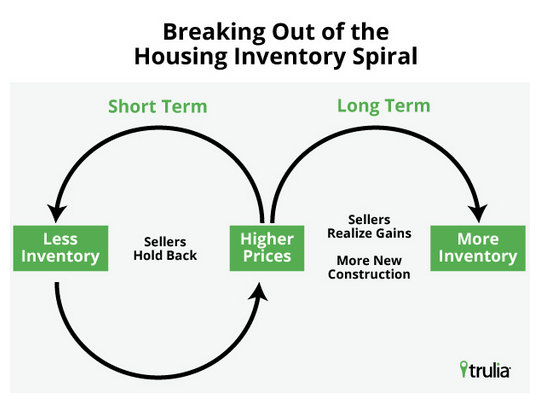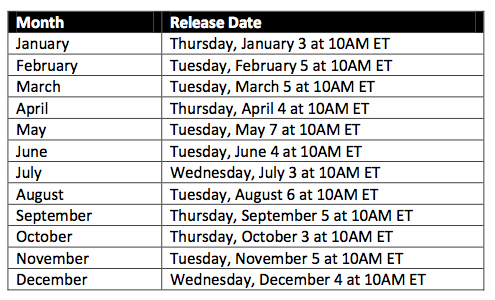By Gino Blefari
President & CEO
Intero Real Estate Services, Inc.
Being happy in life is the first step to success, in my mind. Contrary to popular belief, it doesn’t come from fame, fortune, other people, or material possessions. Rather, it comes from within. You can choose to be happy or you can choose to be unhappy. It’s all up to you. Happy people are happy because they make themselves happy. They maintain a positive outlook on life and remain at peace with themselves.
The question is: how do they do that?
It’s quite simple. Happy people have good habits that enhance their lives. They do things differently. Check out this great list that outlines some of the things that make happy people, well, happy. It was written by Chiara Fucarino, a freelance writer, on the blog Successify! and was recommended to me by Eric Rees, Intero’s Director of Information Technology.
Ask any happy person, and they will tell you that they …
Don’t hold grudges. - Happy people understand that it’s better to forgive and forget than to let their negative feelings crowd out their positive feelings. Holding a grudge has a lot of detrimental effects on your well-being, including increased depression, anxiety, and stress. Why let anyone who has wronged you have power over you? If you let go of all your grudges, you’ll gain a clear conscience and enough energy to enjoy the good things in life.
Treat everyone with kindness. - Did you know that it has been scientifically proven that being kind makes you happier? Every time you perform a selfless act, your brain produces serotonin, a hormone that eases tension and lifts your spirits. Not only that, but treating people with love, dignity, and respect also allows you to build stronger relationships.
See problems as challenges. - The word “problem” is never part of a happy person’s vocabulary. A problem is viewed as a drawback, a struggle, or an unstable situation while a challenge is viewed as something positive like an opportunity, a task, or a dare. Whenever you face an obstacle, try looking at it as a challenge.
Express gratitude for what they already have. - There’s a popular saying that goes something like this: “The happiest people don’t have the best of everything; they just make the best of everything they have.” You will have a deeper sense of contentment if you count your blessings instead of yearning for what you don’t have.
Dream big. - People who get into the habit of dreaming big are more likely to accomplish their goals than those who don’t. If you dare to dream big, your mind will put itself in a focused and positive state.
Don’t sweat the small stuff. - Happy people ask themselves, “Will this problem matter a year from now?” They understand that life’s too short to get worked up over trivial situations. Letting things roll off your back will definitely put you at ease to enjoy the more important things in life.
Speak well of others. - Being nice feels better than being mean. As fun as gossiping is, it usually leaves you feeling guilty and resentful. Saying nice things about other people encourages you to think positive, non-judgmental thoughts.
Never make excuses. - Benjamin Franklin once said, “He that is good for making excuses is seldom good for anything else.” Happy people don’t make excuses or blame others for their own failures in life. Instead, they own up to their mistakes and, by doing so, they proactively try to change for the better.
Get absorbed into the present. - Happy people don’t dwell on the past or worry about the future. They savor the present. They let themselves get immersed in whatever they’re doing at the moment. Stop and smell the roses.
Wake up at the same time every morning. - Have you noticed that a lot of successful people tend to be early risers? Waking up at the same time every morning stabilizes your circadian rhythm, increases productivity, and puts you in a calm and centered state.
Avoid social comparison. - Everyone works at his own pace, so why compare yourself to others? If you think you’re better than someone else, you gain an unhealthy sense of superiority. If you think someone else is better than you, you end up feeling bad about yourself. You’ll be happier if you focus on your own progress and praise others on theirs.
Choose friends wisely. - Misery loves company. That’s why it’s important to surround yourself with optimistic people who will encourage you to achieve your goals. The more positive energy you have around you, the better you will feel about yourself.
Never seek approval from others. - Happy people don’t care what others think of them. They follow their own hearts without letting naysayers discourage them. They understand that it’s impossible to please everyone. Listen to what people have to say, but never seek anyone’s approval but your own.
Take the time to listen. - Talk less; listen more. Listening keeps your mind open to others’ wisdoms and outlooks on the world. The more intensely you listen, the quieter your mind gets, and the more content you feel.
Nurture social relationships. - A lonely person is a miserable person. Happy people understand how important it is to have strong, healthy relationships. Always take the time to see and talk to your family, friends, or significant other.
Meditate. - Meditating silences your mind and helps you find inner peace. You don’t have to be a zen master to pull it off. Happy people know how to silence their minds anywhere and anytime they need to calm their nerves.
Eat well. - Junk food makes you sluggish, and it’s difficult to be happy when you’re in that kind of state. Everything you eat directly affects your body’s ability to produce hormones, which will dictate your moods, energy, and mental focus. Be sure to eat foods that will keep your mind and body in good shape.
Exercise. - Studies have shown that exercise raises happiness levels just as much as Zoloft does. Exercising also boosts your self-esteem and gives you a higher sense of self-accomplishment.
Live minimally. - Happy people rarely keep clutter around the house because they know that extra belongings weigh them down and make them feel overwhelmed and stressed out. Some studies have concluded that Europeans are a lot happier than Americans are, which is interesting because they live in smaller homes, drive simpler cars, and own fewer items.
Tell the truth. - Lying stresses you out, corrodes your self-esteem, and makes you unlikeable. The truth will set you free. Being honest improves your mental health and builds others’ trust in you. Always be truthful, and never apologize for it.
Establish personal control. - Happy people have the ability to choose their own destinies. They don’t let others tell them how they should live their lives. Being in complete control of one’s own life brings positive feelings and a great sense of self-worth.
Accept what cannot be changed. - Once you accept the fact that life is not fair, you’ll be more at peace with yourself. Instead of obsessing over how unfair life is, just focus on what you can control and change it for the better.



 Blogging can be one of the most effective ways to build both your reputation
and Web traffic through search engine optimization (SEO). In fact, there are
many who think
Blogging can be one of the most effective ways to build both your reputation
and Web traffic through search engine optimization (SEO). In fact, there are
many who think  Play ball! 2012 World Series champions, the
Play ball! 2012 World Series champions, the  We developed
The Boyenga Team Preferred Client Service for buyers that are serious about
finding a home in Silicon Valley. There is no obligation for this service and no
fee. As a Preferred Buyer Client, you are placed ahead of all of our other
clients and given attention specifically focused on meeting your exact needs.
We developed
The Boyenga Team Preferred Client Service for buyers that are serious about
finding a home in Silicon Valley. There is no obligation for this service and no
fee. As a Preferred Buyer Client, you are placed ahead of all of our other
clients and given attention specifically focused on meeting your exact needs. 


